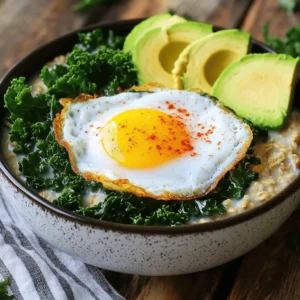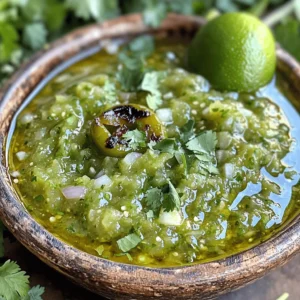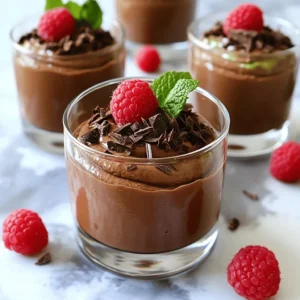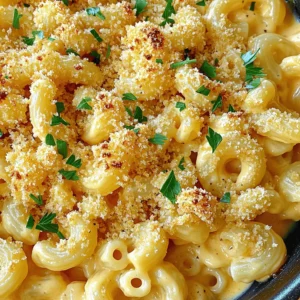- Sweet Cornbread Delight With Simple Baking Tips
- Strawberry Cheesecake Sweet Rolls Delightful Treat
- Dwarven Feast Hearty Stew for Cozy Gatherings
- Easy Cream Cheese Chicken Enchiladas Tasty and Quick Recipe
- Vegan Chocolate Avocado Pudding Indulgent Dessert
- Sweet Potato Black Bean Enchiladas Flavorful Feast
- Crispy Air Fryer Chicken Wings Your Next Favorite Dish
- Garlic Butter Shrimp Pasta Flavorful and Easy Recipe
- Gluten-Free Blueberry Muffins Simple and Tasty Snack
- Coconut Curry Lentil Soup Rich and Flavorful Meal
- Mouthwatering Teriyaki Chicken Bowls Easy and Delicious
- Instant Pot Chicken Tikka Masala Simple and Tasty Dish
- Chocolate Chip Cookie Dough Bites Tasty and Fun Snack
- Berry Smoothie Popsicles Delightful and Healthy Treat
- Herbed Lemon Grilled Chicken Juicy and Flavorful Dish
- Cauliflower Fried Rice Tasty Low-Carb Meal Idea
- Caprese Salad Skewers Fresh and Flavorful Appetizer
- Mango Salsa with Avocado Fresh and Flavorful Recipe
- Cheesy Cauliflower Bake Delightful and Easy Recipe
- Mushroom Risotto Creamy and Flavorful Delight
- Sweet and Spicy Roasted Chickpeas Crunchy Snack Treat
- Crispy Veggie Spring Rolls Easy Homemade Delight
- Homemade Granola Bars Simple and Healthy Snack
- Caramel Apple Dip with Cream Cheese Delight
- Peanut Butter Banana Overnight Oats Easy and Tasty Delight
- Chocolate-Dipped Almonds Scrumptious and Easy Snack
- S'mores Brownie Bars Irresistible and Easy Treat
- Simple Chicken Stir-Fry Quick and Tasty Recipe Guide
- Peach Caprese Salad Fresh and Flavorful Delight
- Garlic Butter Shrimp and Asparagus Tasty Quick Dish
- Lemon Herb Grilled Salmon Flavorful and Simple Meal
- Balsamic Glazed Brussels Sprouts Flavorful Side Dish
- Stuffed Bell Peppers with Quinoa Flavorful Meal Idea
- Honey Mustard Chicken Skewers Flavorful and Easy Meal
- Banana Bread Overnight Oats Simple and Nourishing Recipe
- Cheesy Spinach Artichoke Dip Irresistible Flavor Guide
- Savory Oatmeal with Fried Egg Flavorful Breakfast Idea
- One-Pan Lemon Garlic Chicken and Asparagus Delight
- Homemade Salsa Verde Flavorful and Fresh Recipe
- Chocolate Avocado Mousse Creamy and Rich Delight
- Easy Chicken Enchiladas Simple and Delicious Recipe
- Baked Macaroni and Cheese Simple Comfort Food Guide

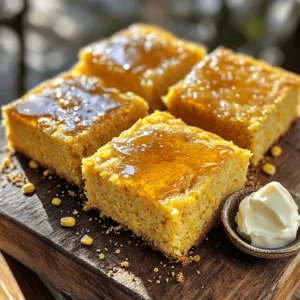

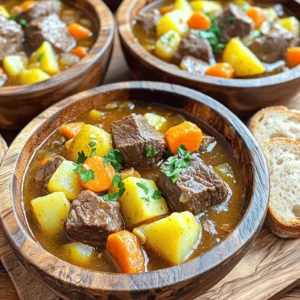

![To make this rich and creamy dessert, gather these ingredients: - 2 ripe avocados, pitted and peeled - 1/2 cup unsweetened cocoa powder - 1/2 cup maple syrup (or agave syrup) - 1/4 cup almond milk (or any plant-based milk) - 1 teaspoon vanilla extract - Pinch of salt - 1/4 cup melted dark chocolate (dairy-free) - Fresh berries and mint leaves for garnish (optional) Each ingredient plays a key role in achieving the perfect texture and flavor. The avocados give creaminess, while cocoa powder gives that rich chocolate taste. When picking avocados, choose ripe ones that feel slightly soft when pressed. They should have smooth skin, free of dark spots. Quality cocoa powder truly elevates this pudding. Opt for unsweetened, high-quality cocoa for the best flavor. The maple syrup or agave syrup should be pure for a natural sweetness. If you can, use organic almond milk. It adds a nice touch to the pudding. You can easily swap some ingredients if needed. For example, if you don’t have maple syrup, agave syrup works great. You can also use any plant-based milk you prefer, like soy or oat milk. If you want a nut-free option, try coconut milk. For added flavor, you can use vanilla bean paste instead of extract. If you’re not a fan of dark chocolate, try using vegan chocolate chips. These simple swaps let you customize this vegan chocolate avocado pudding to your taste. For the full recipe, check out the detailed instructions. First, gather all your ingredients. You need ripe avocados, unsweetened cocoa powder, maple syrup, almond milk, vanilla extract, salt, and melted dark chocolate. Ripe avocados are key. They should be soft to the touch. This ensures a creamy pudding. Measure your ingredients carefully. This makes blending easier and faster. Now, it’s time to blend! Start by placing the avocados in your blender or food processor. Add in the cocoa powder, maple syrup, almond milk, vanilla extract, and a pinch of salt. Blend on high speed until the mixture is smooth and creamy. If your blender struggles, pause to scrape down the sides. This helps everything blend evenly. Once smooth, slowly pour in the melted dark chocolate. Blend again until it mixes well. Taste your pudding. If you want it sweeter, add a little more maple syrup. Blend for a few more seconds to combine. Transfer your luscious pudding into serving bowls. Cover them with plastic wrap or a lid. Place them in the fridge for at least 30 minutes. This chilling time helps the pudding thicken. When ready to serve, take them out. You can garnish with fresh berries or mint leaves for a pop of color. Enjoy your vegan chocolate avocado pudding! For the complete recipe, refer to the Full Recipe section above. To get a creamy and smooth pudding, start with ripe avocados. They should feel soft but not mushy. When you blend, use a high-speed blender or food processor. This helps break down the avocados well. If the mixture is too thick, add a little more almond milk. Blend again until it’s velvety. Taste is key! After blending, try a spoonful. If it needs more sweetness, add a bit more maple syrup. Blend again for a few seconds. Keep tasting until it feels just right. You can also swap maple syrup with agave syrup if you want a different flavor. Presentation makes dessert special. For this pudding, I love using fresh berries and mint leaves. They add color and freshness. You can also sprinkle some cocoa powder on top. Try adding a few dark chocolate shavings for extra flair. For the full recipe, visit [Full Recipe]. Enjoy making your vegan chocolate avocado pudding! {{image_2}} You can add fun flavors to your pudding. Try adding a shot of espresso for a rich coffee taste. You can also mix in spices like cinnamon or cayenne for a warm kick. A dash of sea salt can highlight the chocolate flavor nicely. Each tweak can make this dessert feel new and exciting. If you want to change the sweetener, maple syrup works great, but you can use agave syrup too. For a sugar-free option, try using stevia or monk fruit sweetener. When it comes to milk, almond milk is my go-to, but oat milk or coconut milk can be used instead. Each milk will change the taste a bit, so feel free to experiment! While serving in bowls is classic, you can get creative. Try using small cups or shot glasses for a fun twist. Layer the pudding in a parfait with granola or fruits. You can also pipe it into a pie crust for a unique dessert. The options are endless, and each presentation adds to the fun of enjoying this tasty treat. For the full recipe, check out [Full Recipe]. To keep your vegan chocolate avocado pudding fresh, store it in an airtight container. This helps prevent air from entering and keeps it creamy. Make sure to cover the surface with plastic wrap if you don't have a lid. This will stop the pudding from turning brown. You don’t need to reheat this pudding. It tastes best when chilled. If you want it warm, gently heat it in a saucepan over low heat. Stir it often to avoid cooking the pudding. This pudding lasts about 3 to 5 days in the fridge. If you want to store it longer, you can freeze it. Place it in a freezer-safe container. It will stay good for up to 3 months. When you want to eat it, thaw it overnight in the fridge. Stir well after thawing to regain the creamy texture. For the best results, enjoy it fresh. You can find the full recipe to make this delightful treat anytime. To make this pudding sugar-free, swap the maple syrup with a sugar-free sweetener. Options like stevia or erythritol work well. Start with a small amount and adjust to taste. Remember, the sweetness level may vary between sweeteners. Always blend until smooth to keep the creamy texture. Yes, you can make this pudding without a blender. Use a fork or potato masher to mash the ripe avocados until smooth. Then, mix in the cocoa powder, maple syrup, and almond milk. Stir well until everything is combined. It may take a bit longer, but it can still be delicious! You can use frozen avocados, but you must thaw them first. Place them in the fridge overnight or run them under warm water. Once thawed, drain any excess water. This will help keep the pudding smooth. Then, follow the recipe as usual for a tasty treat. For the complete recipe, check the Full Recipe section! This blog post covered how to make vegan chocolate avocado pudding. We explored the best ingredients, methods for prep, and blending tips. I shared ideas for flavor and sweetener swaps. I also included storage info and FAQs for common questions. With this pudding, you can enjoy a creamy and rich dessert without guilt. Remember, experimenting with spices or different milks can bring your creation to the next level. Enjoy your journey to making the perfect vegan treat!](https://mysavedrecipe.com/wp-content/uploads/2025/05/379573ba-6bc8-44f3-b1ff-9ed019e846ed-300x300.webp)
![To make Sweet Potato Black Bean Enchiladas, gather these simple ingredients: - 2 medium sweet potatoes, peeled and diced - 1 can (15 oz) black beans, rinsed and drained - 1 cup corn kernels (fresh or frozen) - 1 teaspoon cumin - 1 teaspoon chili powder - Salt and pepper, to taste - 2 cups enchilada sauce (store-bought or homemade) - 8 small corn tortillas - 1 cup shredded cheese (cheddar or Monterey Jack) - Fresh cilantro, for garnish - 1 avocado, sliced (for topping) These enchiladas are a tasty way to enjoy healthy ingredients. Each serving offers: - Calories: 350 - Protein: 14g - Carbohydrates: 54g - Dietary Fiber: 10g - Total Fat: 12g Sweet potatoes provide vitamins A and C while black beans add protein and fiber. This dish is filling and nutritious. You can adjust this recipe to fit various diets. Here are some options: - Vegan: Omit cheese or use a vegan cheese substitute. - Gluten-Free: Use gluten-free tortillas instead of corn tortillas. - Low-Carb: Substitute sweet potatoes with zucchini or cauliflower. These changes keep the dish flavorful while meeting different dietary needs. For the full recipe, check the earlier section. First, you need to preheat your oven to 375°F (190°C). This step is key for even cooking. Next, bring a large pot of salted water to a boil. Add the diced sweet potatoes and cook them for 10-12 minutes. You want them to be fork-tender. After that, drain and set them aside. In a large bowl, combine the sweet potatoes, rinsed black beans, corn, cumin, chili powder, salt, and pepper. Mix it well so all the flavors blend together. This filling will be the heart of your enchiladas. Now, warm the corn tortillas. Use a dry skillet over medium heat. Heat them for about 30 seconds on each side. This makes them soft and easy to work with. Grab a greased 9x13-inch baking dish. Pour about 1/2 cup of enchilada sauce on the bottom. Take one tortilla and fill it with about 1/3 cup of your sweet potato mixture. Sprinkle a little cheese on top, then roll it up tightly. Place it seam-side down in the dish. Repeat this for all tortillas. Pour the remaining enchilada sauce over the rolled enchiladas. Make sure they are covered well. Then, sprinkle the rest of the cheese on top. Cover the dish with foil and bake for 20 minutes. After that, remove the foil. Bake for another 10-15 minutes until the cheese is melted and bubbly. Take the dish out of the oven and let it cool for a few minutes. Before serving, garnish with fresh cilantro and sliced avocado. Enjoy your Sweet Potato Black Bean Enchiladas, bursting with flavor! For more detailed guidance, check the Full Recipe. To make the best enchiladas, use fresh tortillas. They should be soft and warm. Heat them in a skillet for a few seconds. This makes them easy to roll. Also, don’t overfill the tortillas. About 1/3 cup of filling works well. If you pack them too tight, they can break. When cooking sweet potatoes, cut them into even pieces. This helps them cook evenly. Boil them for 10-12 minutes until fork-tender. If you prefer, you can also roast them. Just toss them with a little oil, salt, and pepper. Roast at 400°F for about 25 minutes. This adds a nice caramelized flavor. For cheese, I love using cheddar or Monterey Jack. Both melt nicely and add great taste. Feel free to mix them for more flavor. As for sauces, you can use store-bought enchilada sauce or make your own. A homemade sauce gives a fresh taste and goes well with the sweet potatoes. For a twist, add some lime juice or cilantro to the sauce. You can find the Full Recipe for more detailed steps. {{image_2}} You can add ground turkey or chicken to your enchiladas. This step adds protein and richness. Start by cooking 1 pound of ground meat in a skillet until brown. Drain the fat and mix the meat with the sweet potato filling. This makes the dish hearty and satisfying. You can also season the meat with cumin and chili powder to match the filling's flavors. To make these enchiladas vegan, swap the cheese for a plant-based option. You can use cashew cheese or nutritional yeast for a cheesy flavor. Replace the regular tortillas with corn tortillas that are dairy-free. Ensure your enchilada sauce contains no animal products. This way, you keep the deliciousness without any animal ingredients. If you like heat, add jalapeños to the mix. Chop 1-2 fresh jalapeños and stir them into the sweet potato filling. You can also sprinkle some sliced jalapeños on top before baking. This adds a nice kick and makes the dish more exciting. Adjust the amount based on your spice preference. To keep your enchiladas fresh, let them cool completely. Place leftovers in an airtight container. They will stay good in the fridge for up to four days. If you want to enjoy them later, freezing is a great option. To reheat, take the enchiladas out of the fridge. Preheat your oven to 350°F (175°C). Cover the dish with foil to keep them moist. Heat for 20-25 minutes, or until warm. You can also use a microwave. Place them on a microwave-safe plate and heat in 30-second intervals until hot. To freeze, wrap each enchilada tightly in plastic wrap. Then place them in a freezer-safe bag. They can last for up to three months. When you're ready to eat, thaw them overnight in the fridge. Bake them at 350°F (175°C) until heated through. This way, you can enjoy sweet potato black bean enchiladas anytime! For the full recipe, check the earlier section. Yes, you can prepare these enchiladas ahead of time. Just assemble them and cover tightly. Store in the fridge for up to 24 hours. When ready to cook, just bake as directed. This makes meal prep easy and quick! If you want to swap black beans, use pinto beans or kidney beans. You can also try lentils for a different texture. Each option adds protein and flavor to your dish. To make enchilada sauce, blend together: - 1 can (15 oz) of tomato sauce - 2 tablespoons chili powder - 1 teaspoon cumin - 1 teaspoon garlic powder - Salt to taste. Heat it in a pot until warm, stirring often. This simple sauce gives your enchiladas a fresh taste! Enchiladas go well with many sides, like: - Mexican rice - Refried beans - A fresh salad - Guacamole. These sides add more color and flavor to your meal. To make the enchiladas gluten-free, use corn tortillas instead of flour tortillas. Make sure the enchilada sauce is gluten-free as well. This way, you can enjoy the dish without worry! For the full recipe, check out the [Full Recipe]. You learned about making tasty Sweet Potato Black Bean Enchiladas. We covered the key ingredients, steps, and tips for success. You can even make variations to suit your taste. Storage options help keep your leftovers fresh. I hope you feel ready to try this fun recipe. Enjoy your cooking and impress everyone with your delicious enchiladas!](https://mysavedrecipe.com/wp-content/uploads/2025/05/8a4ce175-32c4-4bc9-a779-9fbc3b8ebdf4-300x300.webp)

![For a great Garlic Butter Shrimp Pasta, you'll need these main items: - 8 oz (225g) spaghetti or linguine - 1 lb (450g) shrimp, peeled and deveined - 4 tablespoons unsalted butter - 4 cloves garlic, minced - 1 teaspoon red pepper flakes, adjust to taste - 1 lemon, juice and zest - 1/2 cup cherry tomatoes, halved - 1/4 cup fresh parsley, chopped - Salt and pepper to taste These main ingredients bring together rich flavors. The shrimp adds protein, while garlic and butter create a tasty sauce. The lemon brightens the dish, and cherry tomatoes add sweetness. You can boost the taste of your dish with some optional ingredients. Consider adding: - Grated Parmesan cheese, for serving - A splash of white wine, for depth - Fresh basil, for a twist - Spinach or arugula, for greens These extras enhance the dish. Parmesan cheese gives creaminess, while white wine adds complexity. Fresh herbs like basil make it fresh and fragrant. Leafy greens add nutrients and balance. Pair your Garlic Butter Shrimp Pasta with these tasty sides: - A crisp green salad with vinaigrette - Garlic bread for dipping - Steamed vegetables like broccoli or asparagus These accompaniments round out the meal. A salad adds crunch, while garlic bread soaks up sauce. Steamed veggies bring more color and health. Check out the Full Recipe for all the details on making this delicious dish! Start by boiling a large pot of salted water. Add 8 oz of spaghetti or linguine. Cook according to the package instructions until the pasta is al dente. This usually takes about 8 to 10 minutes. Remember to reserve 1 cup of pasta water before draining. Set the pasta aside once done. In a large skillet, melt 2 tablespoons of butter over medium heat. Once it’s melted, add 4 cloves of minced garlic and 1 teaspoon of red pepper flakes. Sauté for about 1 minute. You want to smell that garlic! Now, raise the heat to medium-high. Add 1 pound of peeled and deveined shrimp to the skillet. Season with salt and pepper. Cook for about 2 to 3 minutes on each side. The shrimp should turn pink and opaque. Remove the shrimp from the skillet and set them aside. In the same skillet, add the remaining 2 tablespoons of butter. Toss in 1/2 cup of halved cherry tomatoes, 1 tablespoon of lemon juice, and the zest of 1 lemon. Sauté everything for about 3 to 4 minutes. The tomatoes should become soft and burst a bit. This adds great flavor! Return the cooked shrimp to the skillet. Now, add the drained pasta. Toss everything together. If it seems dry, add a bit of the reserved pasta water. Mix until the pasta is well-coated in the sauce. You’ll want a nice, creamy consistency. Remove the skillet from heat. Stir in 1/4 cup of chopped fresh parsley. Taste the dish and adjust the seasoning with more salt, pepper, or lemon juice if needed. Serve the pasta on plates. If you like, sprinkle some grated Parmesan cheese on top. Enjoy your Garlic Butter Shrimp Pasta! For the full recipe, check the full details above. To get the best shrimp, choose fresh or frozen shrimp. I prefer shrimp that are large and easy to cook. When cooking, do not overdo it. Cook shrimp for 2-3 minutes on each side. They should turn pink and opaque. If you see them curling, they are done. Overcooked shrimp become tough and rubbery. Seasoning is key for this dish. I use salt and pepper, but you can add more. For a spicy kick, increase the red pepper flakes. Lemon juice and zest brighten up the sauce. Taste as you go. If you like more lemon, add it! You can also sprinkle in fresh herbs like basil or thyme for extra flavor. Use a large skillet for cooking shrimp. A non-stick skillet works best. This helps prevent sticking and burning. A big pot is great for boiling pasta. Remember to keep a cup of pasta water. This water helps to create a creamy sauce later. Always have a spatula handy for stirring. For this dish, a serving bowl is nice for presentation. For the full recipe, check back to the start! {{image_2}} You can boost this dish's nutrition by adding vegetables. Spinach, broccoli, or bell peppers work well. Simply sauté them with the shrimp. Add the veggies right after the garlic. They will cook quickly and add both flavor and color. You can also toss in peas or zucchini for extra crunch. This not only makes the dish healthier but also more vibrant. While I love spaghetti or linguine, you can use other types of pasta. Penne, fettuccine, or even whole wheat pasta can be great choices. Each type brings a unique texture. Just remember to adjust cooking times based on the pasta you choose. You can even try gluten-free pasta for a different twist. It will taste great with the garlic butter sauce. Feel free to experiment with seasonings and sauces. Try adding fresh herbs like basil or thyme for depth. You can also swap out red pepper flakes for chili powder. For a creamier sauce, add a splash of heavy cream or cream cheese. Adding a bit of white wine while cooking can enhance the flavor too. It brings out the shrimp's natural sweetness. For the full recipe, check out the Garlic Butter Shrimp Pasta . To store your Garlic Butter Shrimp Pasta, let it cool first. Place it in an airtight container. This keeps the dish fresh. You can store it in the fridge for up to three days. If you want to keep it longer, freezing is a great option. When you're ready to eat, reheating is easy. You can use a microwave or a skillet. If using a microwave, place the pasta on a plate. Heat it on medium power for 1-2 minutes. Stir halfway to heat evenly. If using a skillet, add a splash of water or broth. Heat over medium until warm, about 5 minutes. This helps keep the pasta moist and tasty. Freezing is a smart choice for leftovers. To freeze, pack the cooled pasta in a freezer-safe container. It can last up to three months. When you’re ready to eat, thaw it in the fridge overnight. Reheat it as mentioned before. Remember, shrimp can lose some texture after freezing, but the flavor stays great. For the full recipe, check out the main article. The best shrimp for this recipe are medium to large ones. I prefer wild-caught shrimp for flavor. They hold up well during cooking and provide a nice bite. Look for shrimp labeled as "peeled and deveined" to save time. Fresh or frozen shrimp both work well. Just make sure to thaw frozen shrimp properly before cooking. Yes, you can use gluten-free pasta. There are many good options available, like brown rice or chickpea pasta. These options cook well and taste great with the garlic butter sauce. Just follow the cooking instructions on the package to get the best results. To spice up this dish, add more red pepper flakes to the garlic butter sauce. You can also stir in some diced jalapeños or a splash of hot sauce. Adjust the heat to fit your taste. Just remember, it’s easier to add heat than to take it away, so start small. Yes, you can prepare parts of this recipe ahead of time. Cook the pasta and shrimp in advance. Store each in separate containers in the fridge. When ready to eat, reheat them in a skillet with some extra butter and lemon juice. This keeps the dish fresh and tasty. Great side dishes include a simple green salad or garlic bread. You can also serve steamed vegetables like broccoli or asparagus. These sides add color and nutrients. They complement the pasta well and make your meal balanced and delicious. For the complete recipe, check out the [Full Recipe]. This blog taught you how to make delicious garlic butter shrimp pasta. You learned essential ingredients and how to cook each part step-by-step. Tips can help you get the right shrimp texture and add flavor. You also discovered tasty variations to enhance your dish. Finally, I covered storage and reheating methods. Enjoy your tasty pasta! Remember to try new things and make it your own. Happy cooking!](https://mysavedrecipe.com/wp-content/uploads/2025/05/56e09446-ebd9-4f5f-a80a-51a06c9eab60-300x300.webp)


![- 2 boneless, skinless chicken breasts, sliced into thin strips - 1 cup teriyaki sauce (store-bought or homemade) - 1 tablespoon sesame oil - 2 cups cooked jasmine rice - 1 cup broccoli florets - 1 red bell pepper, sliced - 1 cup shredded carrots - 2 green onions, chopped - 1 tablespoon sesame seeds - Salt and pepper to taste For the teriyaki chicken bowls, you need fresh chicken breasts. They give the dish a great flavor. Teriyaki sauce is key too. You can buy it or make your own. Fresh vegetables like broccoli, red bell pepper, and carrots add crunch. - Skillet or wok - Mixing bowls - Serving bowls You’ll want a good skillet or wok for cooking. A mixing bowl helps you marinate your chicken. Lastly, serving bowls are perfect for presenting your beautiful meal. - Calories: Approx. 480 - Macronutrients breakdown: - Proteins: 36g - Fats: 12g - Carbs: 58g Each serving packs a punch with solid protein from the chicken. The rice provides carbs for energy. This meal keeps you full and satisfied while tasting amazing. Don't forget to check the [Full Recipe] for more details! To marinate the chicken, start by slicing your chicken breasts into thin strips. Place them in a bowl and add half of the teriyaki sauce. This step is crucial. It lets the chicken soak up all the tasty flavors. I recommend marinating for at least 20 minutes. If you have more time, you can marinate it longer for even better flavor. Next, heat your skillet or wok on medium-high heat. Add one tablespoon of sesame oil. It gives the chicken a nice flavor. Once the oil is hot, add the marinated chicken. Cook it for about 5 to 7 minutes. The chicken should turn golden brown and caramelized. To check if it is done, make sure it is no longer pink in the center. You can use a meat thermometer; the chicken should reach 165°F. Now, it's time to stir-fry the veggies. In the same skillet, add broccoli florets, sliced red bell pepper, and shredded carrots. Stir-fry them for about 3 to 5 minutes. This keeps the veggies tender-crisp. Stir them often to ensure they cook evenly. You want them to keep their bright colors and crunch. After cooking the chicken and veggies, it’s time to combine everything. Pour the remaining teriyaki sauce over the chicken and vegetables. Stir well to coat all the ingredients evenly. Cook for an additional 1 to 2 minutes. This final stir is key. It helps blend all the flavors together. Now, you are ready to serve your mouthwatering teriyaki chicken bowls. For the full recipe, check out the complete instructions above. To get juicy chicken, start with marinating. Use half of your teriyaki sauce to coat the chicken. A marinating time of at least 20 minutes works best. The flavors really soak in during this time. Avoid cooking chicken straight from the fridge; let it warm up for 10 minutes. This helps it cook evenly. Cook the chicken on medium-high heat for about 5-7 minutes. Look for no pink in the center. It should be golden brown. Stir occasionally to avoid burning and ensure even cooking. You can switch up the teriyaki sauce for a fun twist. Try using a hoisin sauce or a sweet chili sauce. These add new layers of flavor. If you want a kick, add crushed red pepper or a dash of ginger. For toppings, consider adding crushed peanuts or diced avocado. These add texture and flavor to your bowl. A beautiful presentation makes your dish shine. Use colorful veggies to create a vibrant look. Arrange the chicken and vegetables neatly on top of the rice. For gatherings, serve in large bowls. Let guests build their own bowls. Offer extra toppings on the side. This adds fun and choice to the meal. For a lovely finish, drizzle some teriyaki sauce over the top and sprinkle sesame seeds. This makes each bowl look like a work of art! {{image_2}} You can easily swap chicken for shrimp, tofu, or beef. Each protein brings its own flavor and texture. Shrimp cooks quickly, so add it to the skillet for just 3-4 minutes. Tofu takes a bit longer to crisp up, around 5-6 minutes. Beef should be sliced thin and cooked for about 6-8 minutes. Adjust your cooking times based on the protein you choose. If you want a vegetarian or vegan dish, use tofu or tempeh as a chicken substitute. Both options soak up flavors well. You can also add a mix of vegetables like bell peppers, carrots, and snap peas. These will not only add color but also crunch to your bowl. While jasmine rice is a classic base, consider other grains like brown rice or quinoa. Brown rice offers more fiber and a nutty flavor. Quinoa is higher in protein and cooks faster than brown rice. Each grain choice adds its unique taste and nutrition to your teriyaki bowls. You can even use cauliflower rice for a low-carb option. To keep your teriyaki chicken bowls fresh, store them in airtight containers. This prevents air from spoiling your food. Place the leftover chicken and veggies in one container and the rice in another. This way, the rice stays fluffy. Make sure to refrigerate them within two hours after cooking. This will help prevent bacteria growth. When it's time to eat again, reheating is easy. You can use the microwave or a skillet. If using a microwave, heat on medium for about 2-3 minutes. Stir halfway through to heat evenly. For a skillet, warm on low heat for about 5 minutes. Add a splash of water or teriyaki sauce to keep it moist. If you want to save some for later, freezing works well. Let the chicken and veggies cool before packing them in freezer-safe bags. Remove as much air as possible. Rice can also be frozen but should be cooled first. When ready to eat, thaw the meals overnight in the fridge. Heat them thoroughly before serving. To make homemade teriyaki sauce, you need a few basic ingredients: - 1/4 cup soy sauce - 1/4 cup mirin - 2 tablespoons sugar - 1 tablespoon rice vinegar - 1 teaspoon cornstarch mixed with 1 tablespoon water (for thickening) Start by mixing the soy sauce, mirin, sugar, and rice vinegar in a small pot. Heat it over medium heat. Stir until the sugar dissolves. Once it simmers, add the cornstarch mix. Stir until the sauce thickens. This sauce is sweet and savory. For flavor adjustments, try adding garlic or ginger. You can also use honey instead of sugar for a different taste. Yes, you can use frozen vegetables. They are quick and easy to use. Frozen veggies may change the taste a bit. They can also release extra water while cooking. This may affect the sauce's thickness. For best results, use blends like stir-fry mixes. Look for broccoli, bell peppers, and snap peas. These maintain flavor and texture well. For side dishes, I recommend: - Steamed edamame - Cucumber salad - Miso soup These sides add freshness and balance to your meal. For beverage pairings, green tea works great. It complements the flavors without overpowering them. If you prefer something sweeter, try a light lemonade. For the full recipe of Teriyaki Chicken Bowls, check out the Full Recipe link! In this post, we explored how to make teriyaki chicken bowls from scratch. We covered key ingredients, tools, and nutrition. I provided step-by-step instructions to marinate and cook chicken perfectly. You also learned how to stir-fry vegetables and present the dish nicely. Remember, you can customize with different proteins and grains. Store and reheat leftovers correctly to enjoy this meal later. With these tips, you can create a delicious and satisfying dish for any occasion.](https://mysavedrecipe.com/wp-content/uploads/2025/05/6fa04181-7ee3-4614-ab9c-ad5c3b3194f1-300x300.webp)

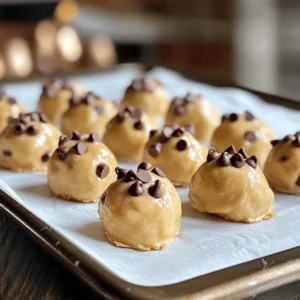
![- 2 cups mixed berries (strawberries, blueberries, raspberries) - 1 cup Greek yogurt (plain or vanilla) - 1 cup almond milk (or any milk of choice) - 2 tablespoons honey or maple syrup - 1 teaspoon vanilla extract - Fresh mint leaves for garnish (optional) What are the health benefits of berries? Berries are packed with vitamins, minerals, and antioxidants. They help fight disease and improve heart health. Eating mixed berries can boost your immune system too. Plus, they add natural sweetness to your popsicles. What are the advantages of Greek yogurt? Greek yogurt is rich in protein, which helps keep you full. It also contains probiotics that support gut health. Using Greek yogurt in your popsicles makes them creamy and adds a nice tang. What are the benefits of using almond milk? Almond milk is a low-calorie, dairy-free option. It has healthy fats and vitamin E, which is great for your skin. Using almond milk keeps these popsicles refreshing and light. Step 1: Blending the Ingredients First, gather your ingredients. Place the mixed berries, Greek yogurt, almond milk, honey, and vanilla extract into a blender. Blend on high speed until the mixture looks smooth and creamy. You can stop to scrape down the sides if needed. This step is key for a great texture. Step 2: Adjusting Sweetness Now, take a small taste of the smoothie mix. If it’s not sweet enough for you, add more honey or maple syrup. Blend again briefly to mix in the sweetness. You want it just right for your taste buds! Pouring the mixture into molds Once you achieve the desired taste, it’s time to fill the molds. Use a spoon to help pour the mixture into your popsicle molds. Make sure to leave a little gap at the top. The mixture will expand when it freezes. Inserting popsicle sticks After filling the molds, carefully insert popsicle sticks. Push them down gently until they are stable. This will help hold the popsicles together when they freeze. Recommended freezing time Now, place the molds in the freezer. Let them freeze for at least 4 to 6 hours. If you can wait longer, they will be even more solid. How to know when they're ready To check if the popsicles are ready, look for a firm and solid texture. You can run warm water over the outside of the molds. This will help release the popsicles easily. Gently pull on the sticks to remove them. Enjoy your delicious berry smoothie popsicles! To enjoy smooth popsicles, avoid ice crystals. First, blend the mixture well. This helps it stay creamy. If you notice ice crystals, try using fresh fruit instead of frozen. Fresh fruit blends easier and keeps the texture nice. For a creamier consistency, add more Greek yogurt. This makes the popsicles rich and thick. You can also use full-fat yogurt for an extra creamy treat. Another trick is to blend the mixture in smaller batches. This ensures each part gets fully mixed. If you want alternatives to honey or maple syrup, try agave or coconut sugar. Both options work great. You can also skip sweeteners if the berries are ripe. Taste the mix first, then add sweetness to your liking. For dietary needs, consider using stevia or monk fruit. These options are low in calories and still sweet. Adjust the amount based on your taste. Always remember, a little goes a long way. Garnishing can make popsicles look fancy. Try topping them with fresh mint leaves. This adds a pop of color and flavor. You can also sprinkle some crushed nuts for a crunchy touch. Pair these popsicles with yogurt or a fruit salad. They make a great snack or dessert. Serve them on hot days for a refreshing treat. Enjoying them with friends makes it even better! {{image_2}} You can change the fruit in your popsicles to keep things fresh. Try using seasonal fruits like peaches or cherries in the summer. They add a nice twist! In the fall, use apples or pears for a cozy flavor. For a tropical taste, mix in mangoes or pineapples. These fruits make your popsicles fun and exciting. You can also blend different berries together for a berry explosion in every bite. If you want a dairy-free treat, there are easy swaps. You can use coconut yogurt instead of Greek yogurt. It gives a rich and creamy texture. For milk, almond milk works great, but you can try oat or soy milk too. These options keep the popsicles creamy without dairy. They still taste amazing and are perfect for everyone. To make your popsicles extra special, consider adding flavors. Fresh mint or basil can bring a bright twist. Just a few leaves blended in can change everything! You can also sprinkle in a dash of cinnamon or nutmeg for warmth. If you like a sweeter taste, try agave syrup or stevia instead of honey. These changes can make your berry smoothie popsicles unique and delightful. For the full recipe, check out the detailed steps to make these delicious treats! You can store berry smoothie popsicles in the freezer for about three months. Use this time frame to enjoy their best taste and texture. For storing, I recommend using airtight containers or freezer-safe bags. This will help keep your popsicles fresh and tasty. To keep your popsicles fresh, wrap them in plastic wrap or aluminum foil. This extra layer stops air from getting in. It also helps prevent freezer burn, which can ruin their flavor and texture. If you notice ice crystals forming, it’s a sign of freezer burn. Enjoy your delicious popsicles within three months for the best experience! How do I get the popsicles out of the mold easily? To release the popsicles, run warm water over the outside of the molds for a few seconds. This warms up the sides and helps the popsicles slide out. Then gently pull on the sticks to free them. Can I use frozen berries instead of fresh? Yes, you can use frozen berries! They blend well and will still taste great. Just make sure to let them thaw a bit before blending for a smoother texture. How can I make the popsicles less sweet? To reduce sweetness, cut back on honey or maple syrup. You can also add more Greek yogurt or almond milk. This will balance the flavors without losing the yummy berry taste. What’s the best way to customize this recipe? You can mix different fruits like bananas or mangoes. Add spinach or kale for extra greens. Try using flavored yogurt or different milk types to change the taste. Get creative and find what you love! Can I use this recipe for a larger batch? Absolutely! Just double the ingredients if you want more popsicles. Make sure you have enough molds to hold the extra mixture. Following the [Full Recipe] will ensure you get the right blend every time. These berry smoothie popsicles offer a tasty and healthy treat. We explored the key ingredients, like mixed berries and Greek yogurt, which provide great nutrition. You learned step-by-step how to blend, freeze, and store these popsicles perfectly. Consider trying variations with different fruits or sweetening options to customize to your taste. With some simple tips, you can make these popsicles creamy and delicious. Enjoy your refreshing treats and share them with others for smiles all around.](https://mysavedrecipe.com/wp-content/uploads/2025/05/b727168a-348a-44c3-a1da-894187ecb43b-300x300.webp)

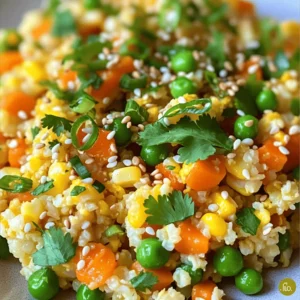

![To make this refreshing Mango Salsa with Avocado, you need fresh, simple ingredients. Each one plays a role in creating the perfect balance of flavor. Here’s what you’ll need: - Ripe mango - Ripe avocado - Red onion - Red bell pepper - Jalapeño pepper - Fresh cilantro - Lime juice - Olive oil - Salt and pepper Using ripe mango and avocado is key. Their sweetness and creaminess make the salsa shine. The red onion and red bell pepper add crunch and color. The jalapeño gives a nice kick, but you can adjust it to your taste. Fresh cilantro brings brightness, while lime juice and olive oil add zest and richness. Finally, salt and pepper enhance all the flavors. For the full recipe, click [Full Recipe]. Now, let’s gather these ingredients and get ready to make a fresh, vibrant salsa! To make delicious mango salsa with avocado, follow these simple steps. - Dice mango and avocado: Start by peeling the mango. Cut it into small pieces. Then, take the avocado and cut it the same way. This gives nice bites in the salsa. - Chop red onion and red bell pepper: Next, take a small red onion. Chop it finely. Then, dice the red bell pepper. Make sure to keep the pieces small for even flavor. - Mince jalapeño pepper: If you like some heat, grab a jalapeño. Remove the seeds and chop it very finely. This will add a nice kick to your salsa. - Combine ingredients in a bowl: Now, take a medium bowl. Add the diced mango, avocado, chopped onion, diced bell pepper, and minced jalapeño. Gently mix them together. Be careful not to mash the avocado. - Mix lime juice and olive oil: In a small bowl, squeeze the juice from two limes. Add one tablespoon of olive oil. Whisk them together until well blended. Once you finish these steps, pour the lime and oil mix over the salsa. Add salt and pepper to taste. Toss it all gently for the best flavor. Let it sit for 15 minutes before serving. This is important because it lets the flavors come together beautifully. For the full recipe, check out the details above. Choosing ripe mango and avocado is key for great flavor. A ripe mango should feel slightly soft when you gently press it. Look for a bright color, too. For avocados, check for a dark skin. It should yield a bit when pressed. If they're hard, give them a few days to ripen. Chopping is an art. Use a sharp knife for smooth cuts. Start by slicing the mango and avocado in half. Remove the pit safely. Then, dice them into small cubes. For onion and bell pepper, chop them finely. This helps blend the flavors nicely. Allowing flavors to meld makes a big difference. After mixing all your ingredients, let your salsa sit for at least 15 minutes. This resting time allows the lime juice to soak in. The taste will be more vibrant and refreshing! For the full recipe, check out the details above. Enjoy your fresh and flavorful salsa! {{image_2}} Mango salsa with avocado is already a hit, but you can make it even better! Here are some fun ideas to mix things up. - Adding pineapple for sweetness: Pineapple adds a nice touch. It makes the salsa sweeter and more tropical. Just chop some ripe pineapple and mix it in. The sweetness of pineapple balances the heat from the jalapeño. - Incorporating black beans for protein: Want to make your salsa heartier? Add black beans! They bring protein and fiber. Rinse a can of black beans and stir them in. This twist makes the salsa filling and great for a meal. - Using different herbs like mint or basil: Want a fresh taste? Try using mint or basil instead of cilantro. Both herbs add unique flavors. Mint gives a cool touch, while basil adds a sweet note. Just chop your chosen herb and mix it in for a new twist. Feel free to try these variations and find your favorite! For the full recipe, check out the delicious Mango & Avocado Fiesta Salsa. To keep your salsa fresh, store it in a tight container. It’s best to refrigerate it right after making it. This keeps all the flavors bright and tasty. - Best practices for refrigerating: Place your mango salsa in an airtight container. This helps prevent air from getting in. The salsa will stay fresh for about 3 days in the fridge. After that, the ingredients may lose their crunch. - Freezing mango salsa: You can freeze your salsa if you want to keep it longer. Use a freezer-safe container and leave some space at the top. Salsa expands when it freezes. It stays good for up to 3 months. When you're ready to eat it, let it thaw in the fridge overnight. - Shelf life of ingredients: Each ingredient has a different shelf life. Fresh mango and avocado are best eaten quickly. They can spoil fast. Red onion and bell pepper last longer. They can stay fresh for about a week in the fridge. Keep an eye on them to enjoy the best taste. For a full recipe, check out the [Full Recipe]. Mango Salsa with Avocado can be mild or spicy. The heat comes from the jalapeño pepper. If you want less heat, remove the seeds and ribs from the jalapeño. For more spice, add more jalapeño or use a hotter pepper. This salsa is fresh and bright, not overpowering. Yes, you can make this salsa ahead of time. However, I recommend making it no more than a few hours before serving. The avocado can brown if left too long. To slow browning, squeeze extra lime juice over the avocado. This helps keep the color bright and fresh. Mango Salsa pairs well with many foods. Serve it with tortilla chips for a tasty snack. It also goes great on fish or chicken for a flavorful meal. Try it on tacos or salads for extra zing. You can even add it to sandwiches for a fresh twist. For the full recipe, check out the details above! In this blog post, we explored how to make delicious mango salsa with avocado. We went over the key ingredients, preparation steps, and helpful tips. You can add creative twists, like pineapple or black beans, to make it your own. Storing your salsa properly keeps it fresh longer. Remember, this tasty dish is easy to prepare and perfect for any occasion. Try it out and enjoy the bright flavors! You won’t be disappointed.](https://mysavedrecipe.com/wp-content/uploads/2025/05/6d9221c3-7ebd-48b1-9e19-afc94c25e611-300x300.webp)
![- Cauliflower florets - Cheddar cheese (shredded) - Parmesan cheese (grated) - Cream cheese - Sour cream - Garlic (minced) - Onion powder - Smoked paprika - Salt and pepper The star of this dish is the cauliflower. It gives a light and fluffy texture. The cheese adds the creamy and cheesy taste. Both cheddar and Parmesan cheese work great together. Cream cheese and sour cream make the dish rich and smooth. The seasonings are key. Garlic adds a punch of flavor. Onion powder gives depth, while smoked paprika adds a hint of smokiness. Salt and pepper balance everything out. - Breadcrumbs for topping - Fresh chives for garnish - Other cheese varieties or vegetables You can add breadcrumbs for a crunchy topping. This gives a nice texture contrast. Fresh chives make the dish look bright and fresh. You can also swap in other cheese types. Mozzarella or gouda can bring a new twist. Adding veggies, like spinach or broccoli, can boost nutrition. For the full recipe, check the section above. - First, preheat your oven to 375°F (190°C). This heat will help the dish cook evenly. - While the oven heats, cut your large head of cauliflower into florets. You want them to be bite-sized. - Bring a large pot of salted water to a boil. Add the cauliflower florets and cook for about 5-7 minutes. This step makes the cauliflower tender but not mushy. Drain the florets and set them aside. - In a mixing bowl, combine the cream cheese, sour cream, 3/4 cup of the shredded cheddar cheese, and grated Parmesan cheese. Add minced garlic, onion powder, smoked paprika, and salt and pepper. Mix until smooth and creamy. - Gently fold the drained cauliflower into the cheese mixture. Make sure the cauliflower is well-coated. This ensures every bite is cheesy. - Next, transfer the cheesy cauliflower mixture into a greased baking dish. Spread it evenly so it cooks nicely. - If you like a crunchy topping, sprinkle breadcrumbs over the top. If not, add the remaining shredded cheddar cheese for extra gooeyness. - Now, place the dish in the preheated oven. Bake for 20-25 minutes, or until the cheese is bubbly and slightly golden. You want to see that nice golden brown on top. - Once done, take the dish out of the oven and let it cool for a few minutes. This helps the cheese set. - Before serving, garnish with fresh chives for a pop of color and flavor. They add a nice touch to the dish. For the complete recipe, you can refer to the [Full Recipe]. To cook cauliflower perfectly, start with fresh florets. Cut them into even pieces for uniform cooking. Boil salted water in a large pot. Add the florets and cook for 5-7 minutes. You want them tender but still firm. Drain them well to avoid a watery bake. For a smooth texture, mix the cheeses in a bowl first. Use a fork or spatula to blend them well. This ensures the blend is creamy and easy to coat the cauliflower. When you add the cooked florets, fold gently to keep their shape. There are many ways to serve cheesy cauliflower bake. It pairs great with grilled chicken or fish. You can also enjoy it as a side with steak or pork. For a fun presentation, try using individual ramekins. This makes each serving feel special. You can also serve it in the baking dish. Just sprinkle fresh chives on top for a pop of color. If you want a lower-calorie dish, consider using reduced-fat cream cheese. You can also swap sour cream for Greek yogurt. This keeps the creaminess while cutting calories. For dietary restrictions, use dairy-free cheese alternatives. There are many available now that melt well. You can also add other veggies, like spinach or mushrooms, to boost nutrition. {{image_2}} You can spice up your cheesy cauliflower bake by adding jalapeños. Just chop them finely and mix them in. This gives a nice kick to the dish. If you prefer fresh tastes, try adding herbs like thyme or rosemary. They add a bright flavor that pairs well with the cheese. Feel free to swap cheeses based on what you have. Mozzarella gives a stretchy texture, while gouda adds a smoky flavor. You can also pump up the nutrition by adding vegetables. Broccoli and spinach mix well and bring more color to the bake. If you want to make this dish faster, try the Instant Pot. Just cook the cauliflower on high for 3-5 minutes. You can also use the stovetop with a large pot. For outdoor cooking, grilling adds a unique flavor. Just wrap the mixture in foil and grill it for about 20-25 minutes. This method gives a nice char and smoky taste. To keep your cheesy cauliflower bake fresh, put it in an airtight container. This helps keep moisture in and air out. Make sure to cool the dish first. If you want to freeze it, let it cool completely. Then, wrap it tightly in plastic wrap. Place it in a freezer-safe bag or container. This way, the bake can last for a long time. When you are ready to eat the leftovers, you can reheat them in several ways. The best method is to use an oven. Preheat the oven to 350°F (175°C). Then, place the cheesy bake in an oven-safe dish. Cover it with foil to keep it moist and heat for about 20 minutes. You can also use a microwave. Just put it in a microwave-safe dish, cover it, and heat in short bursts. This keeps the texture nice. To maintain flavor, add a pinch of salt or fresh herbs when reheating. In the fridge, your cheesy cauliflower bake stays good for about 3 to 5 days. If you freeze it, it can last for 2 to 3 months. However, always watch for signs of spoilage. If you see mold or it smells strange, it's best to throw it away. Checking your leftovers often can help you enjoy them at their best! The best way to cook cauliflower is by boiling it. Start by bringing a pot of salted water to a boil. Add the cauliflower florets and cook for 5-7 minutes. You want the cauliflower to be tender but still firm. Drain it well before mixing it with the cheese. This method keeps the cauliflower bright and flavorful. Yes, you can make cheesy cauliflower bake ahead of time. Prepare the dish up to the baking step. Cover it tightly with plastic wrap or foil and store it in the fridge. When ready to bake, remove the cover and bake it directly from the fridge. This dish can save time on busy days. To make this dish gluten-free, skip the breadcrumbs on top. You can still achieve a crunchy texture by using gluten-free breadcrumbs or simply leave it off. The cheesy cauliflower will still be rich and tasty without them. It’s perfect for anyone who needs to avoid gluten. Yes, you can use frozen cauliflower instead of fresh. Just make sure to thaw it and drain any excess water. You may need to adjust the cooking time slightly since frozen cauliflower is often pre-cooked. This substitution can save time and still taste great. Cheesy cauliflower bake goes well with many side dishes. Here are some ideas: - Grilled chicken or fish for protein. - A fresh garden salad for crunch. - Roasted vegetables for added flavor. - Quinoa or rice for a hearty meal. These options complement the rich flavors of the bake and create a balanced plate. Cheesy cauliflower bake is a simple, tasty dish. We covered the key ingredients, like cauliflower and cheeses. I shared clear steps for preparation, cooking, and baking. You also learned helpful tips for serving and storing leftovers. Consider trying different flavors and methods for a fun twist. With these ideas, you can easily customize this dish to fit your taste. Enjoy cooking and let your creativity shine in the kitchen!](https://mysavedrecipe.com/wp-content/uploads/2025/05/024d4383-2a35-4b86-90af-2a37e8d8e758-300x300.webp)
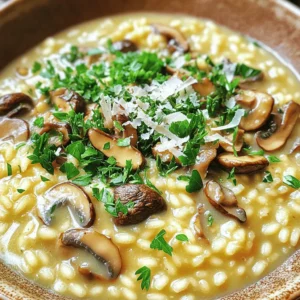
![- 1 can (15 oz) chickpeas, drained and rinsed - 2 tablespoons olive oil - 1 tablespoon honey or maple syrup - 1 teaspoon smoked paprika - 1/2 teaspoon cayenne pepper (adjust to taste) - 1 teaspoon garlic powder - 1/2 teaspoon ground cumin - Salt and pepper to taste - Additional spices for customization (e.g., chili powder, turmeric) - Fresh herbs for garnish (e.g., parsley or cilantro) - Nutritional yeast for a cheesy flavor Sweet and spicy roasted chickpeas are fun to make and eat. You will need a few simple ingredients. First, grab a can of chickpeas. Drain and rinse them well to remove any residue. This step is key for achieving a crispy texture. Next, you will need olive oil to help the spices stick. Honey or maple syrup adds a touch of sweetness. Smoked paprika gives a rich flavor, while cayenne pepper adds heat. Adjust the amount of cayenne to fit your taste. Garlic powder and ground cumin round out the flavor profile. Don’t forget salt and pepper! You can tweak these amounts based on what you like. For extra creativity, think about adding optional spices. Chili powder or turmeric can change the flavor completely. Fresh herbs can also add a nice touch. Some people enjoy a sprinkle of nutritional yeast for a cheesy twist. This is a great recipe to share with friends and family. The full recipe is easy to follow, and everyone can enjoy the delicious crunch of these roasted chickpeas! - Preheat oven to 400°F (200°C). - Pat chickpeas dry with a kitchen towel. This helps them get nice and crispy. - Combine spices and oil in a bowl. - Mix until fully incorporated. You want each chickpea to be well-coated. - Toss chickpeas in the spice mixture. Make sure they are evenly covered. - Spread evenly on a baking sheet. This allows them to roast well. - Roast for 25-30 minutes, stirring halfway. Watch them turn golden brown and crunchy. Follow the Full Recipe for exact measurements and tips. Enjoy the process and the tasty results! To get the best crunch, start by making sure your chickpeas are fully dried. After rinsing, spread them on a clean towel and pat them dry. This step is key to getting that desirable crunch. Also, avoid overcrowding the baking sheet. Give those chickpeas space to breathe. If they are too close together, they will steam instead of roast, leading to a soggy snack. You can customize the spice levels to match your taste. If you love heat, add more cayenne pepper. For a milder flavor, cut back on it. You can also experiment with different sweeteners, such as agave syrup. This allows you to find the perfect balance between sweet and spicy for your palate. Pair your roasted chickpeas with dips like tzatziki or hummus. The coolness of the dip complements the heat of the chickpeas nicely. You can also serve them as a salad topping for a crunchy texture. They make a great snack on their own, too. Enjoy them any way you like! For the full recipe, check out the details above. {{image_2}} You can play with flavors for your roasted chickpeas. Here are two fun ideas: - Sweet Cinnamon Variation: Mix some cinnamon and sugar into your spice mix. This brings a warm and sweet twist to the dish. It’s like dessert in a crunchy form! - Savory Herb Variation: Instead of the sweet mix, go for Italian seasoning or fresh rosemary. This gives a nice herbal taste that pairs well with the chickpeas. You can easily adjust this recipe to fit different diets: - Vegan modifications: Use maple syrup instead of honey. This keeps it sweet and vegan-friendly. - Gluten-free options: This recipe is already gluten-free, so it’s perfect for anyone avoiding gluten. These roasted chickpeas make great additions to many meals: - Using as a protein boost in grain bowls: Toss these crunchy chickpeas into your grain bowls. They add protein and crunch. - Snacking option for movie nights: Serve them as a fun snack while watching a movie. They are healthier than chips and just as tasty! For the full recipe, check out the Sweet and Spicy Roasted Chickpeas section. To keep your sweet and spicy roasted chickpeas fresh, store them in an airtight container. This helps maintain their crunch. They are best consumed within 3-5 days. After this time, they may lose their crispiness and flavor. If you want to enjoy them again, you can reheat chickpeas. Place them in the oven for a few minutes. This helps them regain their crunch. Avoid using the microwave. It may make them soggy, and that's not fun. You can freeze chickpeas before roasting for later use. Make sure to package them properly to prevent freezer burn. Use freezer bags or containers. When you’re ready to eat, just thaw and roast according to the [Full Recipe]. This way, you can enjoy a tasty snack anytime! Sweet and spicy roasted chickpeas can last about 3 to 5 days when stored properly. To keep them fresh, place them in an airtight container at room temperature. They may lose some crunch over time, but they will still taste great. Yes, you can make these chickpeas in advance! Prepare them ahead of time and store them in an airtight container. If you want to enjoy them fresh, roast them just before serving. This way, you keep that delightful crunch. There are many fun ways to serve these chickpeas! Here are some ideas: - Pair them with tzatziki or hummus for a tasty dip. - Sprinkle them on top of salads for added crunch. - Mix them into grain bowls for extra protein. - Enjoy them as a stand-alone snack while watching a movie. The options are endless! For the full recipe, check out the Sweet and Spicy Roasted Chickpeas section. Sweet and spicy roasted chickpeas are simple to make and very tasty. You learned about the main ingredients, how to prepare and roast them, and tips for the best results. Experiment with flavors and serving ideas to enjoy these chickpeas in various ways. They are great for snacking or as meal toppings. Store leftovers well and reheat correctly for a crispy treat. Enjoy making your own versions, and remember, the fun is in the cooking!](https://mysavedrecipe.com/wp-content/uploads/2025/05/0e0625a0-87db-4583-a994-3c38749dc45b-300x300.webp)
![To make crispy veggie spring rolls, you need these main ingredients: - 1 cup cabbage, finely shredded - 1 carrot, julienned - 1 bell pepper (any color), sliced thin - 1 cup bean sprouts - 1 green onion, chopped - 2 cloves garlic, minced - 1 teaspoon ginger, grated - 2 tablespoons soy sauce - 1 teaspoon sesame oil - 20 spring roll wrappers - Oil for frying - Salt and pepper to taste These ingredients create a balanced mix of flavors and textures. The crunchy veggies add freshness, while garlic and ginger bring warmth. You can adjust the soy sauce for more or less saltiness, depending on your taste. Garnishes can elevate your spring rolls. Here are some options: - Sesame seeds for crunch - Fresh cilantro for color - Lime wedges for a zesty kick - Sweet chili sauce for dipping These garnishes add extra flavor and make your dish look beautiful. You can mix and match them based on what you like. If you need gluten-free options, look for rice paper wrappers instead of traditional spring roll wrappers. For vegan substitutes, ensure your soy sauce is labeled vegan. You can also swap out the sesame oil for a different oil, like canola or vegetable oil. These simple changes keep your spring rolls tasty and suitable for everyone! Remember, cooking should be fun and easy, so feel free to adapt the ingredients to suit your needs. For the full recipe, check out the details above. Start by getting your veggies ready. In a big bowl, mix these ingredients: - 1 cup cabbage, finely shredded - 1 carrot, julienned - 1 bell pepper, sliced thin - 1 cup bean sprouts - 1 green onion, chopped This mix gives a nice crunch and flavor. Heat a skillet over medium heat. Add a splash of oil. When the oil is hot, throw in: - 2 cloves garlic, minced - 1 teaspoon ginger, grated Sauté for about 1 minute. The smell will be amazing! Now add your mixed veggies to the skillet. Stir-fry for 3-4 minutes. You want them to soften but still stay crunchy. Drizzle in: - 2 tablespoons soy sauce - 1 teaspoon sesame oil Mix well and season with salt and pepper. Take the skillet off the heat and let the filling cool a bit. Now, it’s time to fill the spring rolls. Grab a spring roll wrapper. Place it on a clean, dry surface. Make sure one corner points towards you. Add about 2-3 tablespoons of the veggie mix near that corner. Fold the bottom corner over the filling. Then, fold in the sides. Roll tightly away from you. Use a little water to seal the top edge. Repeat this with the rest of the wrappers and filling. Heat oil in a deep frying pan to 350°F (175°C). Carefully add the spring rolls in batches. Fry them for about 4-5 minutes. They should turn golden brown and crispy. Turn them occasionally for even cooking. When done, use a slotted spoon to take them out. Place the spring rolls on paper towels to drain extra oil. Enjoy your crispy veggie spring rolls! For the full recipe, check out the details above. To get your spring rolls perfectly crispy, follow these steps. First, ensure your oil is hot enough. Heat it to 350°F (175°C) before frying. If the oil isn’t hot, the rolls will soak up too much oil and become soggy. Fry them in small batches. This helps maintain the oil temperature and gives each roll enough room to cook evenly. Finally, let them rest on paper towels to absorb excess oil, keeping that delightful crunch. Watch out for a few common mistakes. Don't overfill your spring rolls. This can make them hard to seal and fry. Also, avoid using wet or soggy vegetables. Excess moisture can lead to a mushy texture. Make sure to cool the filling before wrapping. If you skip this step, the heat can steam the wrappers and ruin the crispiness. Serve your crispy veggie spring rolls hot. Pair them with sweet chili sauce or soy sauce for a tasty dip. You can also add a sprinkle of sesame seeds and fresh cilantro for a pop of color and flavor. For a fun twist, try serving them with a side of peanut sauce or a zesty lime wedge. Enjoy these delightful bites at parties or as a snack! For the full recipe, check out the Full Recipe section. {{image_2}} You can change the filling to add your favorite veggies. Try spinach, mushrooms, or zucchini. You can also add cooked tofu or tempeh for protein. If you like heat, add some sliced jalapeños or chili peppers. Mixing in fresh herbs like cilantro or mint can brighten the flavors too. To make your spring rolls pop, try adding fun flavors. For a hint of sweetness, mix in some shredded coconut or a bit of brown sugar. You can use different sauces as well, like hoisin sauce or chili garlic sauce. A splash of lime juice adds a nice zing and balances the flavors. You can serve spring rolls in many fun ways. Try cutting them into bite-sized pieces for easy sharing. You can also stack them on a plate and drizzle sauce on top for a beautiful look. For a fun twist, serve them in lettuce leaves instead of wrappers. This adds crunch and freshness to each bite. You can find the full recipe [here]. If you have leftover spring rolls, store them in an airtight container. Place parchment paper between layers to keep them crispy. They stay fresh in the fridge for up to three days. Make sure to cool them completely before storing. This prevents sogginess. To reheat, avoid the microwave. It makes them soft. Instead, use a skillet or oven. Heat a small amount of oil in a skillet over medium heat. Add the spring rolls and cook for 2-3 minutes on each side. For the oven, preheat to 375°F (190°C). Place spring rolls on a baking sheet for 10-15 minutes until hot and crispy. You can freeze prepped spring rolls before frying. Lay them in a single layer on a baking sheet. Once they are frozen, transfer them to a freezer bag. They can last for up to three months. When ready to eat, fry them straight from the freezer. Just add an extra minute or two to the frying time for the best results. For the full recipe, check the previous section. The best way to seal spring rolls is to use water. After you fill the wrapper, fold it securely. Use a little water on the edge to stick it closed. This helps keep the filling inside while frying. Make sure to roll tightly but not too tight, or the wrapper may burst. Yes, you can bake crispy veggie spring rolls. Preheat your oven to 425°F (220°C). Place the spring rolls on a baking sheet lined with parchment paper. Brush them lightly with oil for a crispier texture. Bake for about 20-25 minutes, turning halfway through. They will be less oily but still delicious. You can store homemade spring rolls in the fridge for up to 3 days. Keep them in an airtight container to maintain freshness. If you want to store them longer, freeze un-fried rolls for up to a month. Just remember to separate them with parchment paper to prevent sticking. Spring rolls taste great with several dipping sauces. Popular choices include sweet chili sauce, soy sauce, or peanut sauce. You can also try a mix of soy sauce and vinegar for a tangy kick. For a fresh twist, pair with a zesty lime dipping sauce. Yes, spring rolls have a rich history in Asian cuisine. They originated in China over a thousand years ago, during the Spring Festival. People filled thin wrappers with fresh vegetables to celebrate the new season. Today, spring rolls are popular in many Asian countries, each with unique twists and fillings. In this article, we covered the key ingredients for spring rolls, from main components to optional garnishes and substitutes. We outlined easy step-by-step instructions for making delicious rolls and shared tips for achieving crispiness while avoiding common mistakes. We even explored tasty variations and provided storage info to keep your rolls fresh. With these skills and knowledge, you can enjoy making spring rolls at home. Dive in, be creative, and savor your tasty results!](https://mysavedrecipe.com/wp-content/uploads/2025/05/f537a930-0d1c-42f4-9a4a-394058e0644f-300x300.webp)
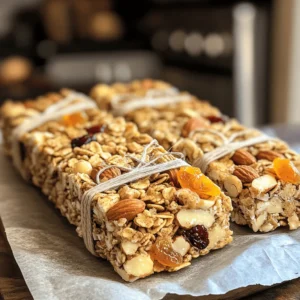
![- 1 (8 oz) package cream cheese, softened - 1/2 cup powdered sugar - 1/4 cup brown sugar - 1 teaspoon vanilla extract - 1/2 cup caramel sauce - 1/2 teaspoon cinnamon - 2-3 apples (such as Granny Smith or Honeycrisp) - Chopped nuts (for garnish) You can change up this recipe with fun extras. Try adding mini chocolate chips for a sweet touch. You can also use different nuts, like almonds or pecans. If you want a twist, add a splash of maple syrup for flavor. For sweeteners, feel free to swap the sugars with alternatives like honey or agave syrup. You can also use a sugar-free caramel sauce if preferred. These options can make the dip fit your taste or dietary needs. Enjoy creating your perfect caramel apple dip! For the full recipe, check out the detailed instructions. Start by grabbing your mixing bowl. Take the softened cream cheese and beat it well. Use an electric mixer for this step. You want it to become smooth and creamy. This is the base of your dip. Next, add in the powdered sugar, brown sugar, and vanilla extract. Mix everything together until it’s fluffy. This sweet mixture will make the dip rich and tasty. Now, it’s time to layer. Take your creamy mix and spread it evenly into a serving dish. This will be the first layer people see. It should look nice and inviting. Now comes the fun part! Drizzle the caramel sauce over your cream cheese layer. Make sure to cover it well. This adds a sweet touch that everyone loves. Then, sprinkle cinnamon over the caramel. This will give it a warm flavor. If you like nuts, add chopped nuts on top. They add a great crunch! After adding the toppings, it’s time to chill. Place the dip in the refrigerator for about 30 minutes. This step is key because it lets the flavors mix. Chilling makes it taste even better! After it’s chilled, serve it with sliced apples. The fresh apples make a great pair with the dip. Enjoy your delicious Caramel Apple Dip with Cream Cheese! To get the best dip, use softened cream cheese. Softened cream cheese blends well and gives a smooth texture. Cold cream cheese can make your dip lumpy. Leave it out for about 30 minutes before mixing. When you beat the cream cheese, use a hand mixer or a stand mixer. Mix at medium speed for about two minutes. This helps to make the dip fluffy and light. You can add fun mix-ins to your dip. Try adding mini chocolate chips for a sweet twist. Chopped nuts also add crunch and flavor. If you like spice, add a pinch of nutmeg or ginger. Adjust the sweetness by adding more or less brown sugar. Taste as you go to find your perfect balance. The right apples can make your dip shine. I recommend Granny Smith apples for their tartness. Honeycrisp apples are sweet and crunchy, too. Slice your apples just before serving to keep them fresh. For a fun serving idea, use a cute bowl for the dip and place the apple slices around it. You can even add a few caramel candies on top for decoration. {{image_2}} You can mix up the flavors of your caramel apple dip. One tasty option is to add chocolate. You can swirl in some melted chocolate or sprinkle chocolate chips on top. The rich taste of chocolate pairs well with the sweetness of caramel. You can also add nuts or fruits to your dip. Chopped pecans or walnuts give a nice crunch. For a fruity twist, try adding dried cranberries or raisins. These add color and a bit of tang. Each bite can surprise you with new flavors. Seasonal changes can inspire new dips. For the holidays, you might want to sprinkle festive spices like nutmeg or ginger. A layer of crushed candy canes on top can make it even more special. You can also use seasonal fruits in your dip. In fall, crisp apples work great. In summer, try fresh peaches or strawberries. Each season brings a new chance to explore flavors. You can make this dip fit different diets easily. For a gluten-free option, just check that your caramel sauce is gluten-free. Many brands offer sauces that fit this need. If you want a vegan dip, you can swap cream cheese for a plant-based version. Use coconut or almond cream and vegan caramel sauce. This way, everyone can enjoy this tasty treat. For the full recipe, check out the [Full Recipe]. To keep your leftover dip fresh, store it in an airtight container. This will help prevent it from absorbing other smells in your fridge. If you want to keep it safe, use glass or plastic containers with tight-fitting lids. These containers keep moisture in and air out. The dip lasts about 3 to 5 days in the fridge. Make sure to check for any changes in smell or texture before eating it. If it looks or smells off, it’s best to throw it away. Yes, you can freeze the dip! To freeze it, place it in a freezer-safe container. Leave some space at the top for expansion. To thaw the dip, place it in the fridge overnight. This keeps the texture smooth. Before serving again, stir it gently to mix any separated ingredients. For the full recipe, check the link provided. Enjoy your caramel apple dip! Can I use low-fat cream cheese? Yes, you can use low-fat cream cheese. It will still taste good. Just remember, it may be a bit less creamy. How can I make caramel sauce from scratch? Making caramel sauce is simple! You need sugar, butter, and cream. Cook sugar until it melts and turns golden. Stir in butter, then add cream slowly. Cook until smooth. What kind of fruits can I dip? You can dip many fruits! Try apples, pears, bananas, or strawberries. These fruits pair well with the sweet dip. Why is my dip too runny? Your dip may be too runny if the cream cheese is not firm enough. Make sure to use softened cream cheese, not melted. What to do if the flavors are too strong? If the flavors are too strong, add more cream cheese. Mix it in to balance the taste. For the complete recipe details, check out the [Full Recipe](#). This blog post covered a tasty cream cheese dip recipe. You learned about the main ingredients, optional add-ins, and step-by-step instructions. I also shared tips for the best texture and flavor. You can even find variations and storage info. Creating this dip can be fun and easy. It’s a perfect treat for sharing. You can customize it to fit any occasion or flavor you like. Enjoy your dip and happy cooking!](https://mysavedrecipe.com/wp-content/uploads/2025/05/e104724d-97fd-4d7b-9a5a-be11c636641e-300x300.webp)
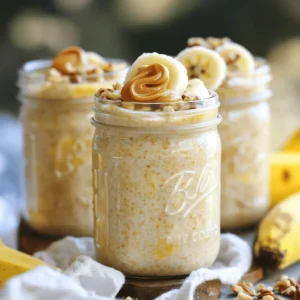


![For a great chicken stir-fry, gather these items: - 1 pound boneless, skinless chicken breast, sliced thinly - 2 tablespoons soy sauce - 1 tablespoon cornstarch - 1 tablespoon vegetable oil - 1 cup broccoli florets - 1 red bell pepper, sliced - 1 cup snap peas - 3 cloves garlic, minced - 1-inch piece fresh ginger, grated - 2 tablespoons chicken broth - 1 tablespoon sesame oil - Salt and pepper to taste - 2 green onions, chopped (for garnish) - Sesame seeds (for garnish) You need some basic tools to cook this dish: - A large skillet or wok for even cooking - A medium bowl for marinating chicken - A sharp knife for slicing - A cutting board for prep work - A spatula for stirring ingredients Choosing fresh ingredients makes your stir-fry tasty and healthy. Here are some tips: - Chicken: Look for bright pink meat with no smell. Fresh chicken should feel firm. - Vegetables: Pick vibrant colors and crisp textures. Avoid wilted or brown spots. - Garlic and Ginger: Choose firm, dry pieces for the best flavor. Fresh garlic should not be sprouted. - Soy Sauce: Opt for low-sodium soy sauce for a lighter taste. - Herbs and Garnishes: Use fresh green onions and sesame seeds for a pop of flavor. For the full recipe, please check the [Full Recipe]. First, you need to cut the chicken breast. Slice it thinly to help it cook fast. Then, take a medium bowl and mix the sliced chicken with soy sauce and cornstarch. This mix will add flavor and help the chicken brown nicely. Let it sit for about 15 minutes. This step is key; it helps the chicken absorb the flavors. Next, heat vegetable oil in a large skillet or wok over medium-high heat. Once the oil is hot, add the marinated chicken. Cook it for about 5 to 7 minutes. You want it browned and cooked through. Then, remove the chicken from the skillet and set it aside. In the same skillet, toss in the broccoli florets, sliced red bell pepper, and snap peas. Stir-fry these for about 3 to 4 minutes. You want them to be tender but still crisp. Then, add minced garlic and grated ginger. Stir for about 30 seconds. This will make your kitchen smell amazing! Now, return the cooked chicken to the skillet. Pour in the chicken broth and sesame oil, stirring well. Heat everything for another 2 to 3 minutes, mixing all the flavors together. Season with salt and pepper to taste. You can adjust the seasoning to your liking. For a great presentation, serve the stir-fry over a bed of steamed rice or quinoa. Garnish with chopped green onions and sesame seeds. This adds color and crunch to your dish. For the full recipe, refer to the section above. Enjoy your delicious chicken stir-fry! The best method for stir-fry is high heat. A wok is great for this. It heats fast and cooks evenly. You can also use a large skillet if you don’t have a wok. Preheat your pan before adding oil. This helps your chicken brown well. Stir-frying cooks food quickly, so keep it moving. This way, nothing burns. One common mistake is overcrowding the pan. If you add too much food, it steams instead of fries. Cook in batches if needed. Another mistake is not cutting chicken evenly. Thin slices cook faster and stay tender. Lastly, don’t forget to prep all your ingredients first. Stir-frying is quick, and you need everything ready to go. To get great flavor, marinate your chicken first. Use soy sauce, cornstarch, and a bit of garlic. This adds depth to the dish. Don’t skip the fresh ginger either; it brightens the taste. Use a mix of vegetables for color and crunch. And remember, a splash of sesame oil at the end boosts flavor. For more details, check the Full Recipe. {{image_2}} You can swap chicken for other proteins. Try sliced beef, shrimp, or tofu. Each option offers its own flavor. Beef adds richness. Shrimp cooks quickly and tastes great. Tofu is perfect for a plant-based meal. Just remember to adjust cooking times for each protein. To make a vegetarian stir-fry, skip the chicken. Use tofu or tempeh instead. Both options soak up flavors well. For a vegan choice, replace chicken broth with vegetable broth. This keeps the dish light and fresh. You can also add more veggies like mushrooms or bell peppers to enhance texture. Seasonal vegetables make your stir-fry vibrant. In spring, use asparagus and snap peas. Summer brings zucchini and bell peppers. Fall is great for carrots and Brussels sprouts. In winter, try broccoli and kale. These choices keep your meals fresh and exciting. Experiment with whatever is in season to maximize flavor. For the full recipe, check out the [Full Recipe]. After you make your chicken stir-fry, let it cool down. Place the leftovers in an airtight container. This keeps the food fresh longer. Store the container in the fridge. Use the leftovers within three days for the best taste. If you want to save the stir-fry for later, you can freeze it. First, cool the dish completely. Then, pack it in a freezer-safe container. You can also use freezer bags. Make sure to remove as much air as you can. Label the bag with the date. Your stir-fry will keep well for up to three months. Thaw it in the fridge before reheating. When you're ready to eat the leftovers, reheat them carefully. For best results, use a skillet over medium heat. Add a splash of water or broth to keep it moist. Stir often to heat evenly. You can also use a microwave. Heat it in short bursts, stirring in between. This way, the stir-fry stays tasty and fresh. Enjoy your meal! For the full recipe, check out the Flavorful Chicken Stir-Fry! The best way to cut chicken for stir-fry is to slice it thin. Start with a cold chicken breast. It’s easier to cut when firm. Use a sharp knife and cut against the grain. This keeps the chicken tender. Aim for strips about ¼ inch thick. Thinner strips cook faster and soak up more flavor. Yes, you can use frozen vegetables for this recipe. They save time and are handy. Frozen veggies are often flash-frozen to keep their nutrients. Just add them to the pan directly. No need to thaw first. They may need a minute more to cook, so watch for tenderness. To make a gluten-free version, swap soy sauce for a gluten-free alternative. You can use tamari or coconut aminos. Check the labels to ensure they're gluten-free. Also, ensure cornstarch is certified gluten-free. This way, you enjoy the same great taste without gluten. For more details, check the Full Recipe for guidance. To make a great chicken stir-fry, you need fresh ingredients and the right tools. We covered step-by-step instructions to prepare and cook it perfectly. I shared tips to avoid common mistakes and achieve the best flavor. You can also try variations for different diets and seasonal veggies. Finally, I provided storage tips to keep your leftovers fresh. Stir-fry is fun and easy, so get cooking and enjoy your meal!](https://mysavedrecipe.com/wp-content/uploads/2025/05/fc9fad3b-389d-45ff-a4ab-9f0c6e016fd4-300x300.webp)
. To make a great Peach Caprese Salad, start with ripe peaches. Look for peaches that feel soft but not too mushy. The skin should be smooth and fragrant. You want that sweet, juicy flavor in every bite. If you find peaches that are not ripe yet, let them sit on your counter for a few days. They will ripen nicely, and you can enjoy the taste later. For mozzarella, fresh is best. Look for mozzarella that is packed in water. This keeps it soft and creamy. You can find it in balls or logs. I prefer the balls for this salad as they are easy to slice. Use whole milk mozzarella for a richer taste. If you want a lighter option, try part-skim mozzarella. Both will work well in your dish. To boost flavor, sprinkle salt and freshly cracked black pepper on your salad. This simple step lifts the natural tastes of the peaches and cheese. You can also add some red pepper flakes for a hint of heat. If you love herbs, add some fresh oregano or thyme for a different twist. Want to mix things up? Swap peaches for nectarines or plums. Both add a nice touch. You can also try different oils, like lemon-infused olive oil, for extra zest. For a dairy-free option, use a vegan mozzarella. It may change the taste, but it’s a fun way to explore new flavors. The look of your salad matters! Use a large white platter to really make those colors pop. Layer the peach slices and mozzarella in a circular pattern. It’s simple, but it looks stunning. Don’t be afraid to overlap them for a lush look. Garnishing can take your salad to the next level. Add fresh basil leaves on top for a fragrant touch. A drizzle of balsamic glaze can add flavor and beauty. Just a few drops can transform the dish. You may also sprinkle some toasted nuts for a crunchy finish. These little touches make your salad stand out. For more details, check the Full Recipe. {{image_2}} You can swap in other fruits for a twist. Try using ripe nectarines or juicy plums. These fruits add flavor and color. You can also use strawberries for a sweet touch. Each fruit brings its unique taste to the salad. Mixing fruits keeps it fresh and fun! Fresh mozzarella is classic, but feel free to experiment. Burrata cheese is creamy and rich. It adds a nice texture to the salad. Feta cheese brings a salty kick. Goat cheese also works well if you like tangy flavors. Each cheese option changes the taste and feel. To make this salad vegan, skip the cheese. You can use avocado instead for creaminess. Cashew cheese is another great alternative. It gives you that rich texture without dairy. You still get a delicious and fresh salad! This salad is naturally gluten-free. All the ingredients are safe to enjoy. So, you can serve it to everyone without worry. Just ensure your balsamic glaze and olive oil are pure. This way, you keep it healthy and gluten-free. If you like spice, add red pepper flakes. A pinch goes a long way in adding heat. You can also drizzle with spicy olive oil. This will give the salad a fiery twist that excites your palate. To make the salad sweeter, try honey or maple syrup. Drizzle it over the top for a touch of sweetness. This balance of sweet and savory creates a delightful flavor dance. You can also add a sprinkle of brown sugar for extra sweetness. Each option enhances the freshness of peaches. For the full recipe, refer to the section above. To keep your Peach Caprese Salad fresh, store leftovers in an airtight container. Place a paper towel in the container to absorb extra moisture. This helps keep the peaches and mozzarella from becoming soggy. Aim to eat the salad within two days for the best taste. You should not reheat this salad. It tastes best fresh. If you do need to warm it up, use a microwave on low power. Just warm it slightly, but avoid cooking it. Prep ingredients ahead of time for easy assembly. Slice your peaches and mozzarella, and store them separately in the fridge. This keeps everything fresh and ready to go. For the basil, keep the leaves whole until you are ready to serve. This way, they'll stay vibrant and flavorful. Enjoy your Peach Caprese Salad as a quick meal or a stunning side dish. For the full recipe, see the section above. A Peach Caprese Salad is a twist on the classic Caprese salad. It combines fresh peaches, mozzarella, and basil. The sweet taste of peaches shines through the creamy cheese. This salad is colorful and refreshing, perfect for summer days. Yes, you can prepare this salad ahead of time, but not too early. Make it up to two hours before serving. Store it in the fridge until you’re ready to serve. This keeps the peaches fresh and the flavors bright. This salad offers many nutrients. Peaches are high in vitamins A and C. Mozzarella gives you protein and calcium. Basil adds antioxidants and flavor. The olive oil provides healthy fats, making this dish nutritious and tasty. You can easily modify this salad for various diets. For vegan options, use vegan cheese or skip it. For gluten-free needs, this recipe is already safe. Just ensure that all ingredients are gluten-free, including the balsamic glaze. Pair this salad with a light drink. A crisp white wine, like Sauvignon Blanc, works well. If you prefer non-alcoholic, try sparkling water with lemon. Both options enhance the fresh flavors of the salad. For the full recipe, check out the detailed steps above! In this blog, we explored how to make a delicious Peach Caprese Salad. We discussed fresh ingredients like ripe peaches, mozzarella, and basil, plus pantry staples like balsamic glaze. I shared step-by-step instructions and tips for serving and storage. Now, you have the tools to create this dish. Feel free to mix ingredients or change flavors. Enjoy making this salad your own! It’s tasty, healthy, and fun to prepare.](https://mysavedrecipe.com/wp-content/uploads/2025/05/f59bb7ac-c05c-4aaf-ad91-41743e4d637b-300x300.webp)
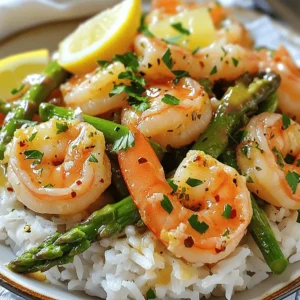

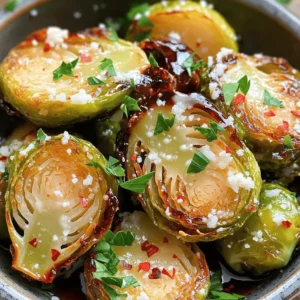
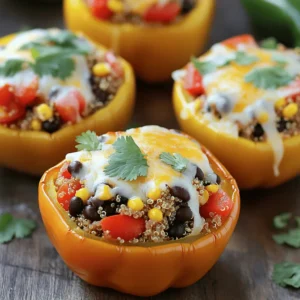

![To make Banana Bread Overnight Oats, gather these simple ingredients: - 1 cup rolled oats - 1 ripe banana, mashed - 1 cup almond milk (or any milk of choice) - 1 tablespoon chia seeds - 1 teaspoon vanilla extract - 1 teaspoon ground cinnamon - 1 tablespoon maple syrup (optional for added sweetness) - 2 tablespoons chopped walnuts (or pecans) - A pinch of salt Each ingredient plays a key role. The rolled oats provide the base and bulk. The mashed banana adds natural sweetness and flavor. Almond milk makes it creamy and rich. Chia seeds thicken the mix and boost nutrition. Vanilla and cinnamon enhance the taste, while walnuts give a nice crunch. If you like it sweeter, add maple syrup. Lastly, a pinch of salt balances the flavors. You can find the complete recipe [Full Recipe]. Enjoy preparing this easy and delicious breakfast! - Combine rolled oats, mashed banana, and almond milk in a bowl. - Add chia seeds, vanilla extract, ground cinnamon, maple syrup, and a pinch of salt. - Fold in chopped walnuts for extra crunch. Making these oats is simple. Start by mixing the rolled oats with the mashed banana and almond milk in a medium bowl. Stir until everything blends well. Next, add the chia seeds, vanilla, cinnamon, maple syrup, and a pinch of salt. These flavors all work together to recreate that yummy banana bread taste. Finally, fold in the chopped walnuts. They add a nice texture and nutty flavor! - Divide into jars or containers with lids. - Seal and refrigerate overnight. Once the mixture is ready, divide it into two jars or containers. Be sure they have tight-fitting lids. This keeps the oats fresh. Seal the jars and place them in the fridge overnight. The oats will soak up the flavors and get nice and creamy. - Stir well before serving. - Optional toppings suggestions. When you wake up, take the jars out of the fridge. Stir the oats well before you eat. If you like a creamier texture, add a splash of almond milk. For extra fun, top with banana slices, a sprinkle of cinnamon, or more walnuts. Enjoy your banana bread overnight oats as a quick and tasty breakfast! You can find the Full Recipe for more details. You can adjust the sweetness of your Banana Bread Overnight Oats. Use maple syrup or honey to suit your taste. If you want more texture, try adding toppings like fresh fruits, coconut flakes, or nut butter. These will add flavor and make your meal more fun. Using ripe bananas is key. Ripe bananas are sweeter and add a natural flavor. They help make your oats taste like banana bread. Soaking oats overnight is important, too. It makes the oats soft and creamy. This lets the flavors blend well, giving you a tasty breakfast. Each ingredient in this recipe offers health benefits. Rolled oats are great for energy and digestion. Chia seeds provide fiber and omega-3 fats. Bananas give you potassium, which is good for your heart. The total calories per serving will be around 300 to 350, depending on your toppings. This makes it a filling option to start your day right. For the full recipe, check out the earlier section. {{image_2}} Banana bread overnight oats can be fun and creative. You can easily change the taste to keep things fresh. Here are some great ideas for you. - Chocolate Banana Bread Overnight Oats: Add 2 tablespoons of cocoa powder to the base recipe. This gives a rich, chocolatey twist. You can also add chocolate chips for extra sweetness. - Nutty Banana Bread Overnight Oats: Mix in 2 tablespoons of almond butter or peanut butter. This adds a creamy texture and nutty flavor. You can also swap walnuts for pecans to change it up. - Gluten-free options: Use certified gluten-free oats. This way, you can enjoy the recipe without worry. - Vegan alternatives: Replace almond milk with any plant-based milk. This keeps the recipe vegan and delicious. - Adding pumpkin spice: For a fall treat, mix in 1 teaspoon of pumpkin spice. This adds warmth and flavor to your oats. - Fresh berries: In summer, top your oats with fresh berries. Strawberries, blueberries, or raspberries add a bright, fruity note. These variations can help you enjoy banana bread overnight oats in many different ways! You can store Banana Bread Overnight Oats in the fridge for up to five days. Use an airtight container to keep them fresh. Glass jars work great for this. They let you see the yummy layers and keep the oats safe. Yes, you can freeze Banana Bread Overnight Oats! This is a good way to save extra servings. To freeze, place them in freezer-safe containers. Leave some space at the top for expansion. When you're ready to eat, take them out of the freezer. Let them thaw in the fridge overnight. To serve, stir the oats well before enjoying. You may want to add a splash of almond milk for a creamier texture. If you stored your oats in the fridge, you can easily reheat them. Just warm them in the microwave for about 30-60 seconds. Stir halfway through to heat evenly. If you like hot oatmeal, this works well! Serve your reheated oats with extra toppings. Try sliced bananas or a sprinkle of cinnamon for added flavor. These small touches make your meal even better. To make Banana Bread Overnight Oats gluten-free, you can use certified gluten-free oats. Regular oats may contain gluten due to cross-contamination. The rest of the ingredients, like almond milk and chia seeds, are naturally gluten-free. Always check labels to be sure! Yes, you can substitute almond milk with any milk you prefer. Options include cow's milk, soy milk, or oat milk. Each type of milk will change the flavor slightly, but all will work well in this recipe. Banana Bread Overnight Oats can last up to five days in the fridge. Make sure to use an airtight container to keep them fresh. The oats will continue to soften over time, so enjoy them within a few days for the best texture. To boost the protein in your oats, add Greek yogurt or protein powder. A scoop of nut butter, like almond or peanut butter, also works well. These additions will keep you feeling full longer. Yes, you can use quick oats instead of rolled oats. Quick oats will soak up the liquid faster, giving you a softer texture. Just remember that the oats may not hold their shape as well as rolled oats do. In this article, we explored how to make Banana Bread Overnight Oats. We covered key ingredients, step-by-step instructions, and tips for customization. You learned about nutrition and storage too. This recipe is simple and tasty, making mornings easier. Remember, you can change the toppings to fit your taste. Enjoy this healthy breakfast that fuels your day. Try different flavors and variations to make it your own. Enjoy experimenting with this easy meal!](https://mysavedrecipe.com/wp-content/uploads/2025/05/f257e97e-12e1-4112-bc6c-3f3a684f0d22-300x300.webp)
![- 1 cup frozen spinach, thawed and drained - 1 cup canned artichoke hearts, chopped - 1/2 cup cream cheese, softened - 1/2 cup sour cream - 1 cup shredded mozzarella cheese - 1/2 cup grated Parmesan cheese - 2 cloves garlic, minced - 1 teaspoon lemon juice - 1/2 teaspoon onion powder - 1/2 teaspoon salt - 1/4 teaspoon black pepper - 1/4 teaspoon crushed red pepper flakes (optional for heat) When making Cheesy Spinach Artichoke Dip, you can adjust the ingredients based on your needs. If you want a healthier version, try using Greek yogurt instead of sour cream. For a vegan option, substitute cream cheese and mozzarella with plant-based versions. You can also use fresh spinach instead of frozen. Just make sure to cook it down first and drain any excess water. Gluten-free options can work too. Use gluten-free crackers or veggie sticks for dipping. You can enjoy this dip while sticking to your diet. Each ingredient adds flavor and texture, making it a delight to share. For the full experience, check out the Full Recipe. 1. Preheat your oven to 375°F (190°C). This step warms the oven for even cooking. 2. In a mixing bowl, add softened cream cheese, sour cream, and lemon juice. Use a hand mixer to blend until smooth. This creates a creamy dip base. 1. Add the chopped spinach and artichokes to the bowl. Mix them in well with the creamy base. 2. Next, incorporate minced garlic, mozzarella cheese, Parmesan cheese, onion powder, salt, black pepper, and crushed red pepper flakes if you like heat. Stir until everything is evenly blended. 1. Transfer the mixture to a baking dish. Spread it out evenly for uniform cooking. 2. Bake in the preheated oven for 20-25 minutes. Look for a hot, bubbly dip that is lightly golden on top. This means it's ready to enjoy! Follow the [Full Recipe] to ensure you don't miss any steps or details. To make your dip creamy, use softened cream cheese. Blend it well with sour cream. This step ensures a smooth base. A hand mixer or whisk works great. Mix until it feels fluffy. To avoid a watery dip, drain the spinach well. Squeeze out excess moisture using a clean towel. Also, do not skip the cheese. It adds both flavor and thickness. When serving, warm dip pairs best with crunchy chips. Try crispy tortilla chips or toasted baguette slices. Fresh veggie sticks add a nice crunch, too. For a beautiful display, garnish with extra Parmesan. Add fresh herbs like parsley or cilantro. A sprinkle of red pepper flakes gives it a pop of color. One mistake is overbaking the dip. Keep an eye on it as it cooks. Aim for a bubbly, golden top without burning. Another error is using the wrong cheese. Stick with mozzarella for stretchiness. Parmesan adds a sharp bite. Avoid soft cheeses that may not hold up. {{image_2}} You can boost the flavor of your Cheesy Spinach Artichoke Dip in several fun ways. One popular option is to add crispy bacon. The salty crunch brings a nice contrast to the creamy dip. You can also try adding diced jalapeños for a spicy kick. If you want to explore different cheeses, swap mozzarella for cheddar or gouda. Each cheese adds its unique twist. Using fresh spinach instead of frozen is another great change. Fresh spinach has a brighter flavor and a nice texture. Just make sure to sauté it first to reduce moisture. This prevents your dip from getting watery. If you want a vegan version, replace cream cheese and sour cream with cashew cream or a store-bought vegan alternative. Nutritional yeast can add a cheesy flavor without using dairy. You can also use almond or coconut yogurt as a creamy base. For low-carb adaptations, skip the sour cream and use cream cheese and Greek yogurt instead. This keeps the dip rich while reducing carbs. Serving it with fresh veggies or low-carb chips makes it perfect for a keto diet. You can take your dip on a global journey too! For a Mediterranean twist, try adding crumbled feta cheese or chopped olives. This gives the dip a savory, salty flavor. You can also mix in sun-dried tomatoes or artichokes marinated in herbs. Consider adding spices from other cultures as well. A sprinkle of curry powder or smoked paprika can transform the dip into a new experience. Each variation can bring a world of flavor to your table. For the complete recipe, check out the [Full Recipe]. Store any leftover Cheesy Spinach Artichoke Dip in an airtight container. Place it in the refrigerator right after it cools. This dip stays fresh for about three to four days. Just remember to check for any changes in smell or texture before eating. You can freeze this dip if you want to save some for later. To freeze, scoop the dip into a freezer-safe container. Leave some space at the top for expansion. It can stay in the freezer for up to three months. When you’re ready to eat it, thaw it in the fridge overnight. To reheat, follow the steps below to keep the texture right. You can use either the microwave or the oven to reheat your dip. In the microwave, heat it in short bursts, stirring in between. This method is quick but can dry out the dip. The oven is better if you have more time. Preheat it to 350°F (175°C) and heat the dip for about 15-20 minutes. Cover it with foil to keep it moist. Either way, stir it well before serving for the best flavor. To make your dip spicier, consider these options: - Add more crushed red pepper flakes. - Mix in diced jalapeños. - Use pepper jack cheese instead of mozzarella. You can adjust the heat level to your liking. Start slow and taste as you go. This way, you’ll find the right balance for your palate. Yes, you can prepare this dip ahead of time. Mix all the ingredients and store them in the fridge. Cover it tightly to keep it fresh. When you’re ready to bake, pop it in the oven. Just remember to let it sit at room temp for about 15 minutes before baking. This helps it cook evenly. Here are some great options to serve: - Crispy tortilla chips - Toasted baguette slices - Fresh vegetable sticks like carrots and celery - Pita chips These choices add crunch and flavor. You can also try adding some fun garnishes like extra cheese or fresh herbs. Yes, you can use fresh spinach! Here’s what to do: - Use about 2 cups of fresh spinach. - Sauté it in a pan until wilted. - Drain any excess water to avoid a soggy dip. Using fresh gives a great taste, but it’s essential to remove the water for the best texture. This blog post covers all you need for Cheesy Spinach Artichoke Dip. We shared ingredients, step-by-step instructions, and tips to avoid common mistakes. You learned about variations and how to store leftovers, too. In the end, this dip is simple and fun to make. Enjoy it with friends and family at your next gathering. Let your creativity shine through with flavor and presentation! You won’t regret trying this tasty treat.](https://mysavedrecipe.com/wp-content/uploads/2025/05/fcbdc1c2-4a15-48ac-83c0-7f17e25fb9d4-300x300.webp)
